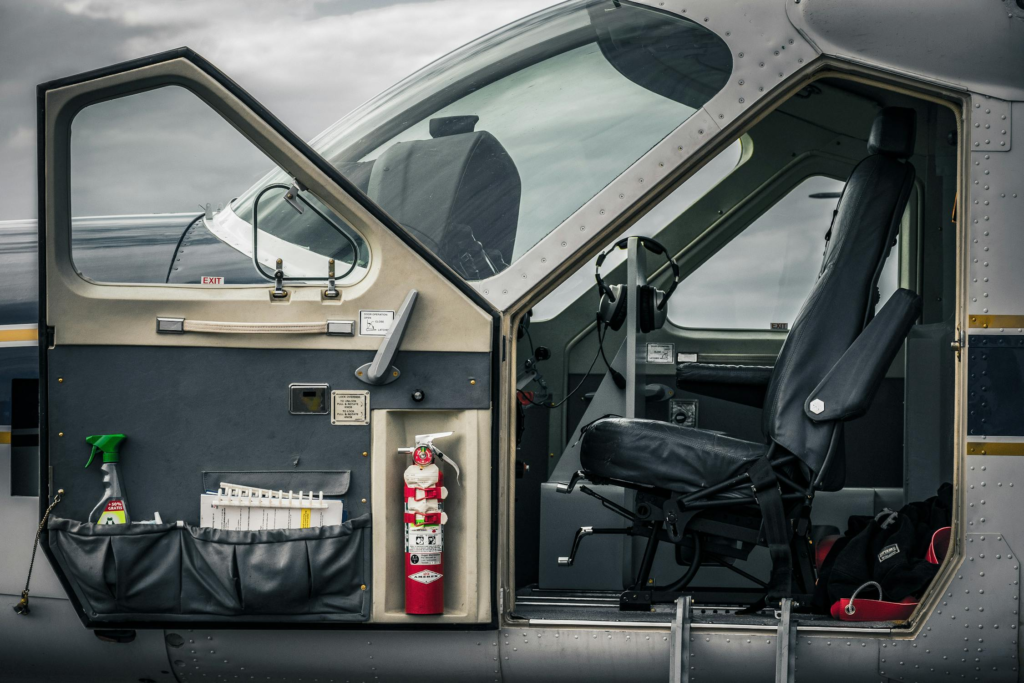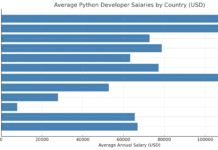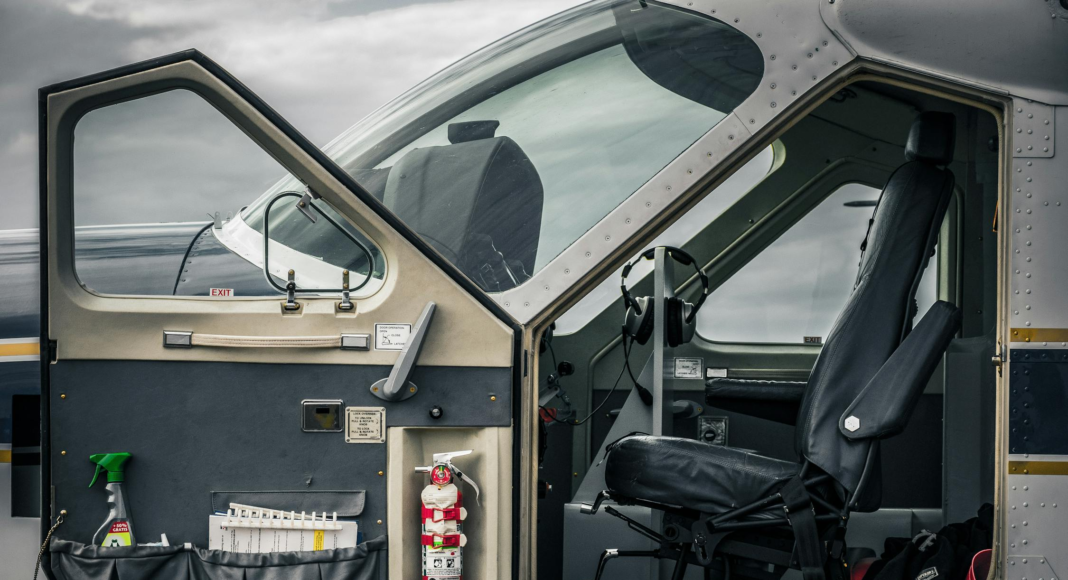Key Takeaways
- AI-driven predictive maintenance is reducing aircraft downtime and optimizing MRO operations with real-time data analytics.
- Cloud-based aviation maintenance software is streamlining compliance, collaboration, and fleet management across global airlines.
- Sustainability-focused solutions are enhancing fuel efficiency, lowering carbon footprints, and driving eco-friendly maintenance practices.
The aviation industry is undergoing rapid transformation, with technological advancements reshaping maintenance, repair, and overhaul (MRO) operations.
As global air travel demand rises and fleets expand, the need for efficient, cost-effective, and regulatory-compliant maintenance solutions has never been more critical.
Aviation Maintenance Software (AMS) is at the forefront of this evolution, helping airlines, MRO service providers, and aircraft operators streamline maintenance processes, improve operational efficiency, and ensure safety compliance.

With the increasing adoption of automation, artificial intelligence (AI), predictive analytics, and cloud-based solutions, aviation maintenance software is revolutionizing how maintenance teams track, manage, and optimize aircraft performance.
Airlines and MRO providers are leveraging data-driven insights to reduce unscheduled downtime, optimize maintenance schedules, and improve asset longevity.
As a result, the market for aviation maintenance software is expected to see substantial growth, driven by technological advancements, regulatory changes, and the need for more sustainable and cost-efficient operations.
In 2025, key trends such as digital twin technology, AI-powered predictive maintenance, blockchain for maintenance record-keeping, and real-time aircraft health monitoring are reshaping the industry.
These innovations not only enhance operational efficiency but also help reduce costs associated with unexpected repairs and regulatory penalties.
Furthermore, with an increasing emphasis on sustainability, aviation maintenance software is integrating environmentally friendly solutions, including optimized fuel management and carbon footprint reduction strategies.
This blog explores the top 20 latest aviation maintenance software statistics, data, and trends in 2025, providing insights into how the industry is evolving.
From market growth projections to emerging technologies and their impact on operational efficiency, these statistics highlight the critical role of AMS in shaping the future of aviation maintenance.
Whether you are an airline operator, MRO service provider, software developer, or industry professional, understanding these trends will help you stay ahead in an increasingly competitive and technology-driven aviation landscape.
Before we venture further into this article, we would like to share who we are and what we do.
About 9cv9
9cv9 is a business tech startup based in Singapore and Asia, with a strong presence all over the world.
With over nine years of startup and business experience, and being highly involved in connecting with thousands of companies and startups, the 9cv9 team has listed some important learning points in this overview of the Top 20 Latest Aviation Maintenance Software Statistics, Data & Trends.
If your company needs recruitment and headhunting services to hire top-quality employees, you can use 9cv9 headhunting and recruitment services to hire top talents and candidates. Find out more here, or send over an email to [email protected].
Or just post 1 free job posting here at 9cv9 Hiring Portal in under 10 minutes.
Top 20 Latest Aviation Maintenance Software Statistics, Data & Trends
- Global Aircraft Maintenance Software Market CAGR: The global aircraft maintenance software market is expected to experience significant growth, with a compound annual growth rate (CAGR) of 6.20% from 2023 to 2030, driven by increasing demand for efficient maintenance solutions.
- Global Aircraft Maintenance Software Market Size (2023): In 2023, the global aircraft maintenance software market is estimated to be valued at several billion dollars, reflecting a substantial investment in digital solutions to enhance maintenance operations.
- North America Aircraft Maintenance Software Market Share (2023): North America holds more than 40% of the global revenue in the aircraft maintenance software market in 2023, primarily due to the presence of major aviation companies and advanced technological infrastructure.
- North America Aircraft Maintenance Software Market CAGR: The North American aircraft maintenance software market is expected to grow at a CAGR of 5.0% from 2023 to 2030, driven by the adoption of advanced technologies and regulatory compliance requirements.
- Asia Pacific Aircraft Maintenance Software Market CAGR: The Asia Pacific region is anticipated to experience rapid growth in the aircraft maintenance software market, with a projected CAGR of 8% from 2023 to 2030, fueled by increasing air travel demand and expanding fleet sizes.
- Global Aviation Maintenance Equipment Market Size (2025): By 2025, the global aviation maintenance equipment market is valued at approximately USD 1374.2 million, reflecting a significant investment in physical tools and machinery necessary for aircraft upkeep.
- Global Aviation Maintenance Equipment Market CAGR: The global aviation maintenance equipment market is projected to grow at a CAGR of 8.6% from 2025 to 2033, driven by the increasing need for efficient and reliable maintenance practices across both commercial and military sectors.
- Aviation Maintenance Equipment Market Growth Drivers: The growth of the aviation maintenance equipment market is primarily driven by factors such as increasing air passenger traffic and the growing fleet size of commercial and military aircraft, which necessitate more advanced and specialized maintenance tools.
- Adoption of Advanced Technologies: There is a rising adoption of advanced technologies like artificial intelligence (AI) and augmented reality (AR) for predictive maintenance in the aviation industry, enhancing efficiency and reducing downtime.
- Regional Market Share: North America and Europe are the largest regional markets for aviation maintenance equipment, accounting for a significant portion of global demand due to their well-established aviation industries and stringent maintenance standards.
- Commercial Airlines’ Demand Share: Commercial airlines account for a substantial share of demand in the aviation maintenance equipment market, as they require a wide range of specialized tools to maintain their large fleets efficiently.
- M&A Activity Level: The aviation maintenance equipment industry experiences a moderate level of merger and acquisition (M&A) activity, as companies seek to expand their product offerings and enhance their market presence.
- Data Quality Impact on Maintenance Costs: Improving data quality can significantly reduce maintenance costs by avoiding inefficiencies and optimizing resource allocation, thereby enhancing overall operational efficiency in aviation maintenance.
- Role of Big Data Analytics: Big data analytics plays a crucial role in reliability-centered maintenance (RCM) strategies in aviation, enabling predictive maintenance and reducing unplanned downtime through advanced data analysis.
- Predictive Maintenance Adoption: Predictive maintenance is increasingly adopted across the aviation industry to enhance operational efficiency and safety by identifying potential issues before they occur, thus minimizing aircraft downtime.
- Inventory Management Efficiency: Advanced software solutions improve inventory tracking and management efficiency in aviation maintenance by automating stock levels, reducing manual errors, and ensuring timely replenishment of critical parts.
- Compliance Tracking: Software solutions automate compliance tracking to ensure regulatory adherence in aviation maintenance, streamlining processes and reducing the risk of non-compliance penalties.
- User Adoption Rate: User-friendly interfaces in aviation maintenance software enhance adoption rates among maintenance teams, as intuitive systems facilitate easier learning and usage, leading to higher productivity.
- Fleet Size Growth: The growing fleet size of commercial and military aircraft drives demand for advanced maintenance solutions, including specialized equipment and software, to manage increased maintenance needs efficiently.
- Safety Regulations Impact: Stringent safety regulations in the aviation industry drive the demand for advanced maintenance equipment and software, as compliance with these regulations is critical for ensuring safety and avoiding costly penalties.
Conclusion
The aviation maintenance industry is evolving at an unprecedented pace, driven by technological advancements, regulatory demands, and the ever-growing need for operational efficiency. As the aviation sector continues to expand, maintenance, repair, and overhaul (MRO) providers are turning to sophisticated aviation maintenance software to streamline workflows, minimize aircraft downtime, and ensure compliance with stringent safety regulations. The integration of AI-powered predictive maintenance, cloud-based solutions, blockchain for secure data management, and digital twin technology is transforming how airlines and maintenance teams manage aircraft fleets.
One of the most significant trends in 2025 is the increasing adoption of automation and real-time data analytics. These innovations enable predictive maintenance strategies that reduce unplanned groundings, optimize part replacements, and enhance overall aircraft longevity. Additionally, the rise of Internet of Things (IoT)-enabled aircraft health monitoring systems allows for proactive maintenance interventions, further reducing operational risks and improving passenger safety.
The shift toward sustainability is another major force shaping the industry. With airlines under pressure to reduce carbon footprints, aviation maintenance software is playing a pivotal role in optimizing fuel efficiency, monitoring emissions, and implementing eco-friendly maintenance practices. Digital solutions are helping MROs and airlines transition toward greener operations by reducing paper-based processes, improving energy consumption tracking, and facilitating regulatory compliance with environmental standards.
Furthermore, as global air traffic continues to recover and grow, the demand for aviation maintenance software is expected to rise significantly. Airlines and MRO providers that invest in cutting-edge maintenance technologies will gain a competitive advantage, benefiting from cost reductions, improved aircraft reliability, and enhanced operational efficiency. Cloud-based maintenance management systems are becoming the norm, providing real-time collaboration capabilities across geographically dispersed teams while ensuring seamless compliance with industry standards.
Looking ahead, the future of aviation maintenance will be increasingly data-driven, automated, and integrated with AI-powered insights. As aviation maintenance software continues to evolve, companies that embrace these advancements will be better positioned to enhance operational performance, improve safety outcomes, and adapt to the dynamic landscape of the aviation industry. By leveraging the latest software innovations, airlines and MROs can stay ahead of challenges, optimize resource utilization, and deliver superior service reliability.
The trends and statistics discussed in this blog highlight the importance of aviation maintenance software in shaping the industry’s future. As we move forward, the role of digital transformation in maintenance operations will only continue to grow, making it essential for aviation stakeholders to stay updated on the latest advancements. Whether you are an airline operator, an MRO provider, or a technology developer, keeping pace with these trends will be critical to maintaining a competitive edge in the fast-evolving aviation sector.
If you find this article useful, why not share it with your hiring manager and C-level suite friends and also leave a nice comment below?
We, at the 9cv9 Research Team, strive to bring the latest and most meaningful data, guides, and statistics to your doorstep.
To get access to top-quality guides, click over to 9cv9 Blog.
People Also Ask
What is aviation maintenance software?
Aviation maintenance software is a digital solution that helps airlines, MROs, and aircraft operators manage maintenance tasks, track compliance, and optimize workflows.
Why is aviation maintenance software important?
It enhances operational efficiency, reduces aircraft downtime, ensures regulatory compliance, and improves overall fleet safety through automation and data analytics.
What are the latest trends in aviation maintenance software in 2025?
Key trends include AI-driven predictive maintenance, cloud-based solutions, digital twins, blockchain for record-keeping, and IoT-enabled aircraft health monitoring.
How does AI improve aviation maintenance?
AI enhances predictive maintenance by analyzing real-time data to detect potential failures early, reducing unplanned downtime and optimizing repair schedules.
What role does cloud computing play in aviation maintenance?
Cloud computing enables real-time collaboration, secure data storage, and seamless integration across MRO teams, improving maintenance efficiency and compliance.
How is blockchain used in aviation maintenance software?
Blockchain ensures secure, tamper-proof maintenance records, improves transparency, and streamlines aircraft part tracking across global supply chains.
What is predictive maintenance in aviation?
Predictive maintenance uses AI and data analytics to forecast potential aircraft issues before they occur, minimizing costly repairs and flight delays.
How does digital twin technology help in aviation maintenance?
Digital twins create virtual models of aircraft components, enabling real-time monitoring, predictive analytics, and improved decision-making for maintenance teams.
What are the benefits of IoT in aviation maintenance?
IoT-enabled sensors provide real-time aircraft health monitoring, automate data collection, and enhance predictive maintenance strategies to improve safety and efficiency.
How does aviation maintenance software reduce costs?
By automating processes, improving scheduling, and enabling predictive maintenance, the software reduces labor costs, part replacements, and unexpected aircraft downtime.
What are the key features of modern aviation maintenance software?
Key features include AI-powered diagnostics, real-time analytics, compliance tracking, cloud integration, digital logs, and automated maintenance scheduling.
How does aviation maintenance software improve compliance?
It ensures adherence to aviation regulations by tracking inspections, logging maintenance records, and automating documentation for audits and certifications.
What challenges do MROs face without aviation maintenance software?
Without software, MROs struggle with manual record-keeping, inefficient maintenance scheduling, compliance risks, and increased aircraft downtime.
How does aviation maintenance software enhance fleet management?
It centralizes aircraft maintenance data, optimizes resource allocation, automates tracking, and provides insights for better fleet performance and cost savings.
What industries use aviation maintenance software?
Airlines, MRO providers, private jet operators, military aviation, cargo carriers, and aircraft manufacturers rely on maintenance software for operational efficiency.
Is cloud-based or on-premise aviation maintenance software better?
Cloud-based solutions offer flexibility, scalability, and real-time collaboration, while on-premise software provides enhanced data control and security.
How does sustainability impact aviation maintenance software?
Modern software integrates fuel efficiency tracking, eco-friendly maintenance scheduling, and carbon footprint monitoring to support sustainable aviation goals.
What role does automation play in aviation maintenance?
Automation streamlines routine tasks, improves accuracy in diagnostics, reduces human error, and accelerates maintenance workflows for faster turnarounds.
How can airlines implement aviation maintenance software?
Airlines can adopt software by assessing business needs, selecting a scalable solution, integrating it with existing systems, and training maintenance teams.
What are the leading aviation maintenance software providers in 2025?
Top providers include AMOS, TRAX, Rusada ENVISION, Ramco Aviation, and Ultramain, offering advanced AI, cloud, and automation-driven solutions.
How does big data influence aviation maintenance?
Big data enables real-time analytics, improves failure predictions, optimizes maintenance scheduling, and enhances decision-making for MRO operations.
Can small airlines benefit from aviation maintenance software?
Yes, scalable aviation maintenance software solutions help small airlines streamline maintenance, reduce costs, and ensure compliance without large IT investments.
How does real-time aircraft health monitoring work?
Sensors collect and transmit aircraft performance data in real time, enabling maintenance teams to detect anomalies and take preventive action before failures occur.
What security risks are associated with aviation maintenance software?
Potential risks include cyber threats, data breaches, and unauthorized access, which can be mitigated through encryption, access controls, and regular security updates.
How does aviation maintenance software impact passenger safety?
By ensuring timely maintenance, tracking inspections, and preventing failures, the software enhances overall aircraft reliability and passenger safety.
What is the market growth forecast for aviation maintenance software in 2025?
The aviation maintenance software market is projected to grow significantly due to increasing digital transformation, AI adoption, and MRO automation needs.
How does aviation maintenance software help with inventory management?
It automates spare parts tracking, reduces excess inventory costs, prevents stock shortages, and ensures availability of critical components for maintenance.
What is the role of digital logbooks in aviation maintenance?
Digital logbooks replace manual records, improve data accuracy, streamline regulatory reporting, and enable real-time access to maintenance history.
How will aviation maintenance software evolve in the future?
Future advancements will include AI-driven automation, blockchain-secured records, enhanced mobile accessibility, and deeper integration with IoT for real-time monitoring.































![Writing A Good CV [6 Tips To Improve Your CV] 6 Tips To Improve Your CV](https://blog.9cv9.com/wp-content/uploads/2020/06/2020-06-02-2-100x70.png)


